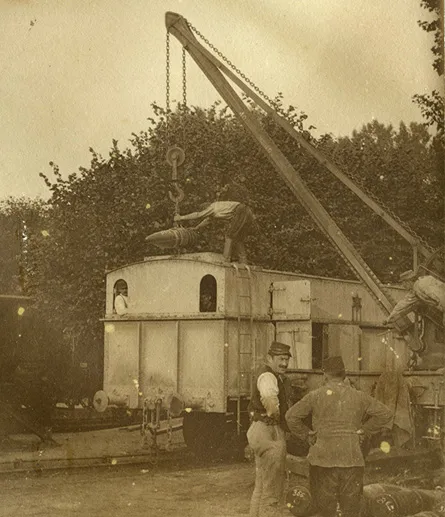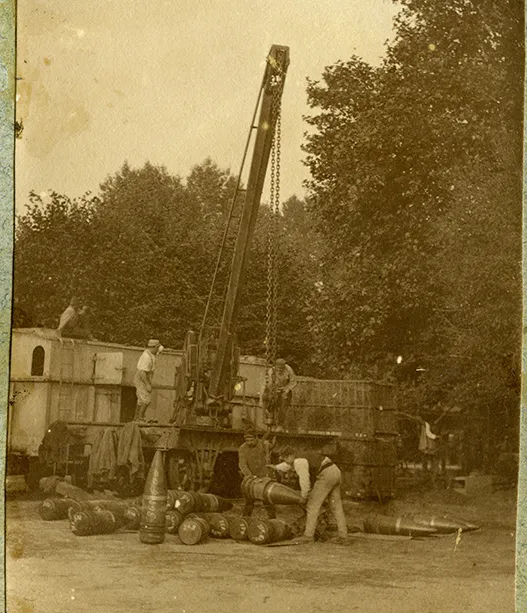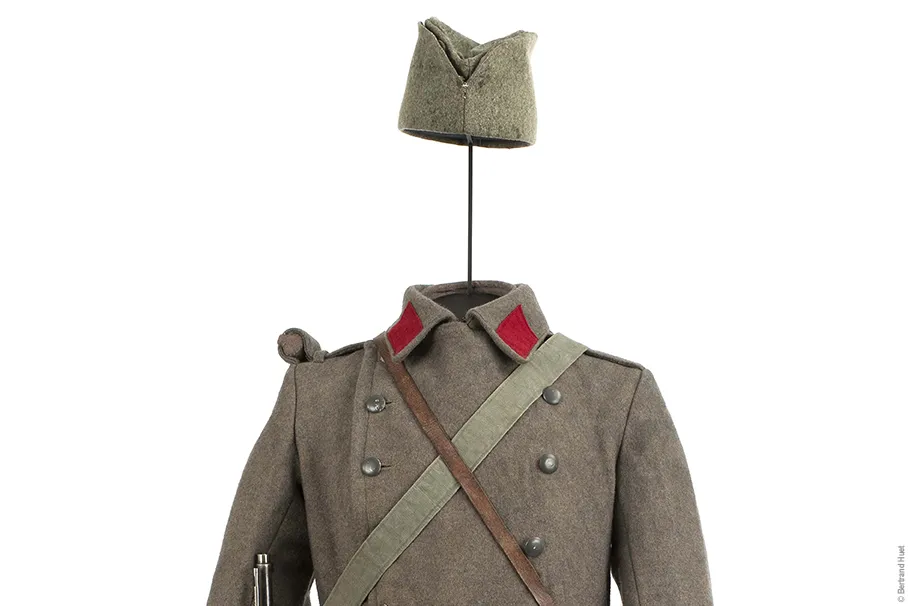
Serbian infantry uniform, 1912
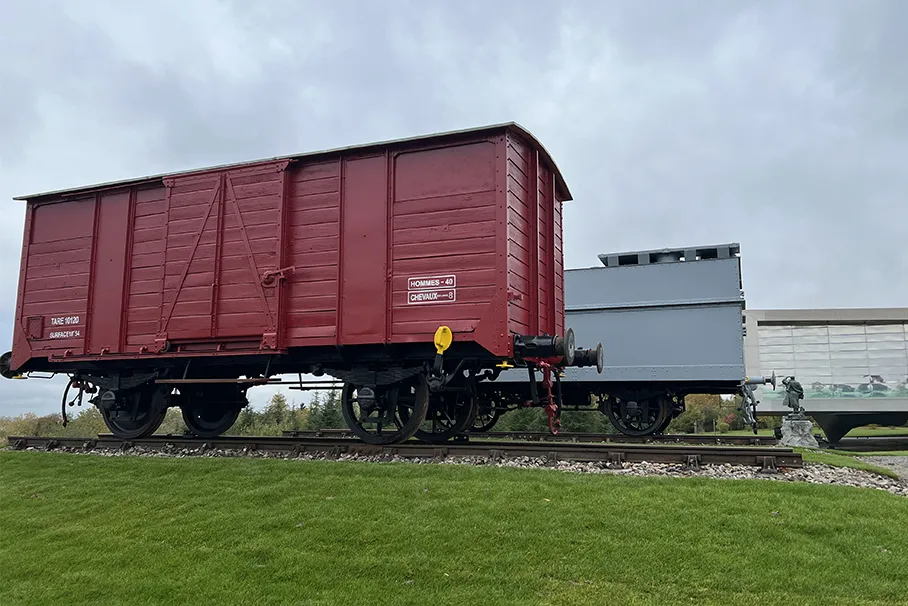
Railways played a considerable role during the First World War. In August 1914, military convoys and requisitioned commercial trains were used to transport the mobilized men swiftly.
Then, as war set in for the long run, delivering supplies of food, equipment and munitions to the troops became one of the main concerns of commanders, who were attentive to them at every level. Railway networks were also used for medical evacuations (carrying the wounded from the theatre of operations to hospitals at the rear) and to transport soldiers on leave.
As the war ground on, manufacturing sites sprung up, staff numbers increased and wagon models were developed to adapt to the demands of warfare. Railways were of key strategic importance
Rail transport was modernized, but the tracks ran above capacity. Transport remained slow (30km/hour on average), making journeys long. Further problems came on top of these track issues: the many convoys were major targets for German aircraft, the size of some stations made loading and unloading certain wagons difficult, and the incompatibility of certain locomotives with wagons led to many problems.
The wagon had wooden sides and a watertight roof, roller doors, and sliding shutters for aeration. The two side doors made it easier to load and unload equipment and troops.
These wagons transported food, troops and the wounded. There were five categories of wagons, which each had to fulfil certain criteria as to their size, capacity and components, for example.
For military transport, these wagons could carry a precise number of men or horses – in this case 40 men or 8 horses. Markings and a label on each side indicated the capacity within.
Deposit, Musée du Génie, Angers
Departure of mobilized troops from Castillon-sur-Dordogne (today Castillon-la-Bataille)
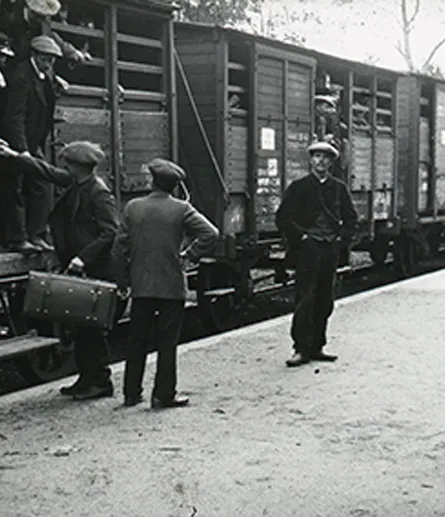
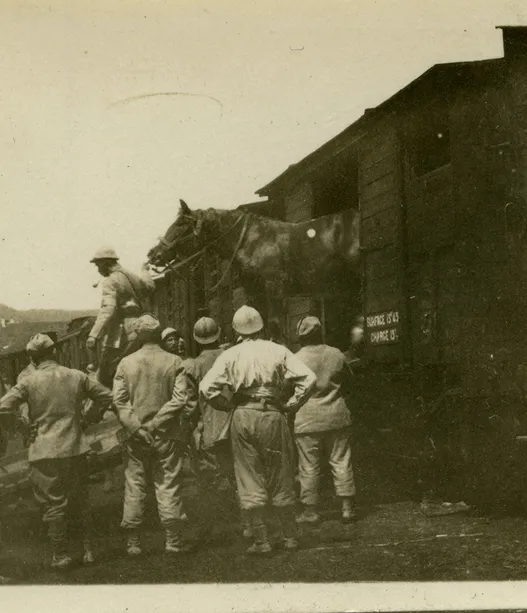
The wagon has a PLM (Paris Lyon Méditerranée) flat chassis, built by La Bruire circa 1903. The sides are made of steel and it was put together by the Saint-Chamond plants in 1916.
These wagons were used to carry shells for rail-mounted heavy artillery. Inside, the wagon is organized so that the shells would be placed horizontally, in the direction of the track, in a position at floor level. The roof is formed of trapdoors and rails designed so that munitions could be manoeuvred using a crane.
A military convoy was generally made up of 40 to 50 wagons towed by a steam locomotive.
Deposit, Musée du Génie, Angers
Loading a shell at Muizon (Marne) station in 1915
